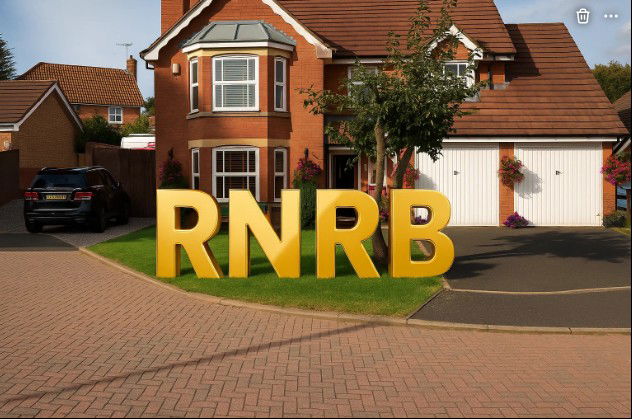Residence Nil Rate Band (RNRB)

Last verified: 18 September 2025 (England & Wales)
Quick-read summary
The Residence Nil Rate Band (RNRB) is an extra Inheritance Tax (IHT) allowance (up to £175,000 per person; up to £350,000 for a couple) when a home passes to direct descendants. It sits on top of the standard Nil Rate Band (£325,000), so many families can reach up to £1 million tax-free if both bands fully apply. The RNRB only applies on death (not to lifetime gifts), and it has moving parts: who inherits, which property counts, “downsizing” rules, and tapering above a £2 million estate. Getting the details right can save you a significant amount of tax.
Practical checklist (is this likely to apply?)
- Death on or after 6 April 2017.
- A qualifying home (or sale proceeds) is closely inherited by direct descendants (children, step-children, adopted children, grandchildren).
- Maximum RNRB is £175,000 each (frozen at this level through 2029/30).
- Unused RNRB can be transferred as a percentage to a surviving spouse/civil partner. If the first death was before 6 April 2017, it’s deemed to be £100,000 for the percentage calculation.
- The £2 million taper reduces RNRB by £1 for every £2 the net estate exceeds £2m; taper can reduce it to zero.
- RNRB applies to the death estate (not to lifetime transfers), and is applied before the standard Nil Rate Band when calculating IHT on the estate.
- Downsized or sold the home? A downsizing addition may preserve relief.
What to consider (the moving parts, plainly)
1) Who counts as a “direct descendant”?
This includes children, step-children, adopted children, foster children (where conditions are met), and lineal descendants such as grandchildren. The inheritance must be “closely inherited”.
2) What property qualifies?
A Qualifying Residential Interest is a residence the deceased owned and lived in at some point. Only one residence can be used for RNRB; the executors can nominate which one if there are several. If the property value is lower than the maximum RNRB, the claim is capped at that lower value.
3) If the home is worth less than the maximum RNRBRNRB is separate from the £325,000 nil-rate band. You can claim up to £175,000 per person, but only up to the value of the qualifying home or share left to direct descendants.Examples
• Home value £100,000 → usable RNRB £100,000.
• Own 50% of a £100,000 home → usable RNRB £50,000.
• Transferable RNRB can be added from a late spouse, but the total used cannot exceed the property (or share) value, unless a downsizing addition applies.
Downsizing addition
If you sold or downsized and still leave other assets to direct descendants, you may claim a downsizing top-up so you don’t lose RNRB just because the home is smaller or was sold.
4) Downsizing, selling or gifting the home
Suppose someone sold, gifted, or downsized from their main home after 8 July 2015 and later leaves assets to direct descendants. In that case, a downsizing addition can restore some/all of the lost RNRB (subject to conditions and calculations). Keep records of the sale and values.
5) Transferable RNRB between spouses/civil partners
Any unused percentage of RNRB on the first death can be transferred and claimed on the second death (IHT435 and IHT436). If the first death occurred before 6 April 2017, both the unused amount and the total available are deemed to be £100,000 for the purpose of calculating the percentage.
6) The £2 million taper

If the net estate at death (assets minus liabilities) is over £2m, RNRB reduces by £1 for every £2 over the threshold. The taper can wipe out the RNRB entirely (e.g., around £2.35m with no debts). Note: The taper test examines the estate at death, not lifetime transfers; that’s why lifetime gifting can help preserve RNRB even if it doesn’t reduce IHT on those gifts.
7) Order of applying the bands
When calculating IHT on the death estate, the RNRB is set against the estate before the general Nil Rate Band. RNRB does not reduce tax on lifetime transfers that become chargeable on death.
8) Claims and paperwork
Executors claim the RNRB using IHT435, and any transferred RNRB using IHT436 (with evidence of the first death and calculations where needed).
Cases
The Evans family (not their real name).
Mrs Evans dies in 2025. Her estate totals £2.30m after liabilities and includes a home left to her children.
- The RNRB maximum is £175,000.
- Her estate exceeds the £2m taper threshold by £300,000, so taper reduces the RNRB by £150,000 (£300,000 ÷ 2).
- Her available RNRB is £25,000.
If Mrs Evans had gifted £300,000 more than seven years earlier (so it would be outside the estate and outside any chargeable lifetime transfers on death), her estate would have been under £2m, and the full £175,000 RNRB could have applied. (Gifting can preserve RNRB because the taper test focuses on the net estate at death, not earlier gifts.)
An earlier first death example.
Mr Patel died in 2016 (before RNRB existed). For transfer purposes, his RNRB is deemed to be £100,000; if nothing in his estate would have used it, 100% is available to transfer to Mrs Patel’s estate on her later death (subject to tapering when she dies).

FAQs
1) Do I need to leave the home outright to my children?
Not always. Certain trust routes still qualify if the value is “closely inherited” by direct descendants. The detail matters: some discretionary trusts won’t qualify unless an appointment is made within two years (s.144 IHTA), whereas life interest/flexible life interest trusts can.
2) What if I sold my home before I died?
You may still be eligible for an RNRB downsizing addition if the sale/gift/downsizing occurred after 8 July 2015 and assets of equivalent value pass to direct descendants. Keep the paperwork; the calculation looks at the “lost relievable amount”.
3) How does the £2m taper actually work?
RNRB reduces by £1 for every £2 the net estate exceeds £2m. At around £2.35m (with no debts), RNRB is usually reduced to zero. Planning can include lifetime gifts to bring the estate below £2m, recognising that gifts have their own Inheritance Tax (IHT) rules.
4) My spouse died before 2017 — is anything transferable?
Yes. The unused percentage can be transferred. Where the first death occurred before 6 April 2017, the calculation assumes £100,000 was available; therefore, if none was used, 100% can be transferred (subject to tapering at the second death).
5) Which band is used first in the estate calculation?
RNRB comes off the death estate before the general Nil Rate Band; RNRB does not apply to lifetime gifts that become chargeable on death.
6) How do I claim it?
Executors use IHT435 (RNRB) and IHT436 (transferable RNRB) when submitting the IHT forms. We can help gather the evidence and calculate any downsizing addition.
Optional Technical Notes (for those who want the detail…)
- Legislation: RNRB sits in IHTA 1984 ss.8D–8M. RNRB is an “extra nil-rate amount” if a qualifying residential interest is closely inherited; the taper is in s.8D(5) (£1 for every £2 over £2m).
- Phasing and current amount: Introduced 2017/18 at £100k and increased to £175k from 2020/21; frozen through 2029/30.
- Taper mechanics: Apply the adjusted allowance after comparing the net estate with the £2m taper threshold; the allowance can be entirely removed.
- Transfer percentage (not amount): For pre-2017 first deaths, the deemed RNRB is £100k; calculate the unused percentage, then apply it to the maximum at the second death.
- Downsizing addition: Available where a qualifying residential interest was owned and occupied but has been disposed of, with assets left to direct descendants; calculation uses the lost relievable amount.
- Forms: IHT435 (RNRB) and IHT436 (transfer).
Sources & further reading
- HMRC Inheritance Tax Manual — RNRB overview
- GOV.UK — Work out and apply the RNRB
- GOV.UK — Nil-rate band and RNRB freeze until 2029/30
- GOV.UK — Downsizing rules
- HMRC forms IHT435/IHT436
Next steps
RNRB can deliver substantial savings — but it’s easy to lose through the taper, the wrong will structure, or timing around downsizing. If your estate is worth approximately £2m, or your will contains trusts, have us run the numbers and verify the structure against the relevant rules. We’ll confirm eligibility, calculate any taper or downsizing addition, and coordinate the right claims for your executors.


